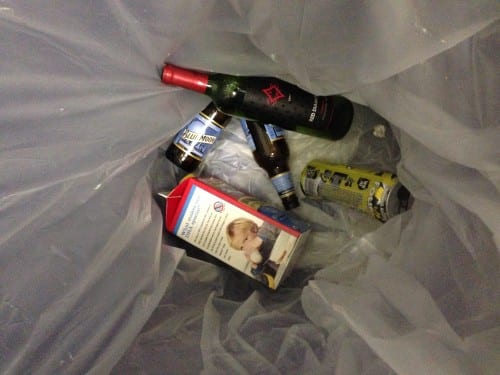
A research study published in November 2022 reveals that drinking even small amounts of alcohol can pose a serious health risk, raising concerns over college students’ awareness of the perils of alcohol consumption.
“I don’t think most college students are aware of what excessive drinking or high-risk drinking is and the dangers associated with it,” Kerri Mahoney, an assistant director for the Center for Prevention and Outreach (CPO), said.
According to Mahoney, college students may drink alcohol due to environmental factors like social pressure, lack of enforcement of underage-drinking laws and limited interaction with adults or parents. However, they often aren’t aware of how much is safe to drink.
“I think people drink a lot in college because you’re free, especially from your parents, and you do whatever you want,” Donato Guastaferro, a senior majoring in economics, said.
Mahoney discussed some of the programs the university offers to educate students about safe alcohol consumption.
“CPO offers Red Watch Band, a bystander intervention training program to teach students about the science of an alcohol overdose and how to call for help, and one of the things we ask students is what is the definition of high risk or binge drinking,” Mahoney said. “Usually, most students don’t know the answer.”
The National Institute of Alcohol Abuse and Alcoholism (NIAAA) defines binge drinking as consuming alcohol that brings blood alcohol concentration (BAC) to 0.08 percent or more. For men, drinking five or more drinks within two hours is binge drinking, and for women it’s drinking four or more drinks within two hours.
Excessive alcohol use is also different among males and females. For men, excessive drinking is over two drinks and for women it is over one drink.
However, the new study indicates that there are risks of high blood pressure, heart disease and some forms of cancer, even when people drink below these levels.
The human body metabolizes alcohol into acetaldehyde, which can damage DNA, according to The New York Times. Once DNA is damaged, cells cannot properly repair themselves and cancerous cells can form.
“I thought it was interesting and I was not surprised,” Mahoney said. “Alcohol is a toxin, so it’s not meant to be in our bodies. It makes sense that if we consume any amount of alcohol that we’re going to see some adverse health effects.”
Per the Centers for Disease Control (CDC), binge drinking is the most common type of excessive alcohol use. Health risks associated with binge drinking are high blood pressure, stroke, liver disease and even cancer.
“There’s a spectrum of consequences or things that can happen if you engage in high risk or binge drinking,” Mahoney said. “The most extreme is death from an overdose, and we see about 1500 college students die every year from alcohol overdose or an alcohol-related death. Other consequences for binge drinking or high risk drinking are hangovers, blacking out, and there is a direct correlation between your grades and binge drinking.”
A study from George Mason University concluded that students who party with alcohol often see a decrease in their GPA. The NIAAA also states that college students who drink alcohol report consequences like missing class, falling behind in class and performing poorly on exams and papers.
“I liked that the New York Times mentioned that although there is a risk of adverse health effects when consuming any amount of alcohol, it’s recommended to try not to drink too much and keep it at low risk,” Mahoney said.
Mahoney is a firm believer that harm reduction is the better approach as opposed to abstinence.
“Preaching abstinence tends to be a little unrealistic because if we only say and repeat ‘don’t drink,’ somebody will eventually drink alcohol and they’re not going to have the tools to identify an overdose and remember what low risk drinking looks like,” Mahoney said.
The NIAAA suggests colleges use educational programs to inform students about the risks of alcohol and discourage the availability of alcohol on campus.
“I think one of the biggest things we can do is inform students about the science of an overdose and how to call for help, especially through the Red Watch Band program at SBU,” Mahoney said.
Mahoney also explained that there are no repercussions when calling for help.
“It’s also good to inform students about the Good Samaritan Policy on campus and the Good Samaritan Law in New York State, where if you or someone you’re with is experiencing an alcohol or drug related overdose, you can call for help and not fear of being arrested by the police,” she said.
In New York State, the Good Samaritan Law allows a person suffering from an alcohol or drug-related overdose, or someone witnessing an overdose, to call for help without being incriminated. Likewise, Stony Brook has the Good Samaritan Policy, where a student experiencing an overdose or a student seeing another student experiencing an overdose can call university police without being punished by the university.
“Teaching students about low-risk drinking is crucial,” Mahoney said. “Drinking water throughout the night or slowing down your pace when drinking an alcoholic beverage are examples of low-risk drinking. If it takes you 20 minutes to drink one beer, that’s not bad.”
“Definitely measure how much you’re drinking and discipline yourself,” Jose de Jesús, a junior economics major, said. “If you don’t, you’re going to keep drinking more and more.”
He discussed his personal experiences with excessive alcohol use.
“I’ve had family members die from alcoholism,” de Jesús said. “Specifically, my grandpa died years ago, and I think he was an alcoholic. I believe he died from liver failure.”
Guastaferro also spoke to the regret students may feel as a consequence of engaging in excessive alcohol use.
“Although drinking alcohol is very popular and might be a fun thing to do, I believe it’s also considered really bad for you. I would say it’s not really worth it to overindulge in alcohol,” Guastaferro said. “You’re going to look back at those times and be like, ‘Why did I do that?’ You’re going to wake up in the morning and say, ‘Why did I drink so much?’”














